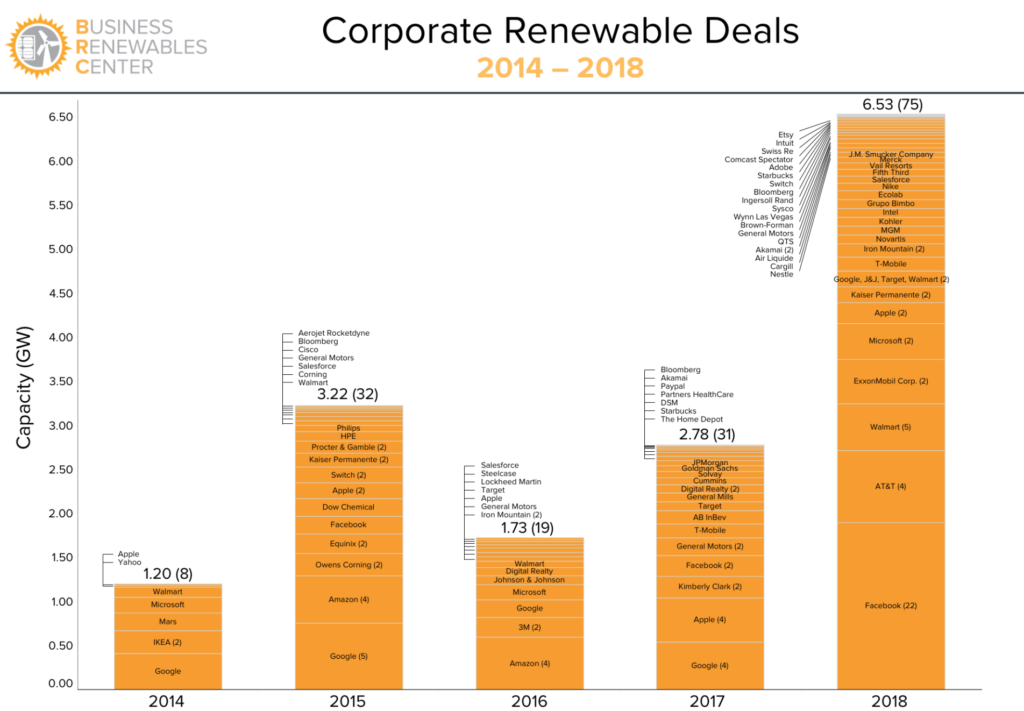Renewable Energy Aggregation – Hacking PPAs
Big headlines in the renewable energy market tend to cover announcements involving large energy procurements between large corporates. In truth, there are a plethora of medium sized companies who are committing to science-based carbon neutral targets and are keen to sign renewable procurement deals. At the end of 2019 over 400 companies had committed to science-based targets. However, the market in 2020 is not yet established to cater for companies with smaller loads who want to have long-term sustained impact.

This class of medium-sized corporate buyers is looking for innovative procurement mechanisms to allow for better market participation. One potential solution being developed is aggregation, a new business model that clusters groups of small renewable energy buyers or sellers into a single procurement.
Founded in 2018, Zeigo is a developing a platform enabling corporates to contract renewable energy directly from generators. The platform now hosts over 300 projects, with a total of 18GW capacity owned by more than 60 renewable energy developers. We caught up with Zeigo’s founder & CEO Juan Pablo Cerda to discuss how they are developing their own automated aggregation capabilities.
Options for smaller buyers today:
Today, most of the press around corporate renewable procurements is centered largely around mega-project purchases between large developers and corporate buyers. However, for small buyer of renewable energy, the options are somewhat limited.
As Juan Pablo Cerda explained,” if your consumption is between 5 and 50 GWh per annum, there’s no great solution. If you are in this part of the market, the options either are going directly to your supplier and getting a green tariff, or you’re buying standalone REGOs.” These methods are limited in their impact of generating new assets (otherwise known as additionality), therefore are not favorable for players looking to make to make a long-term impact. Smaller players need solutions to access the benefits of a long-term fixed PPA which offers low risk potential and helps to support additionality claims.
The Aggregation Business Model:
By bringing numerous companies into a buying group, aggregation reduces transaction costs and creates economies of scale. In addition, if there is a group of suppliers, buyers can also benefit from divesting the PPA risk across a range of assets, instead of hedging the risk on a single supplier, which is ultimately good for the bottom line in a volatile energy market. Cerda detailed how the main incentive for aggregation from the buyer side is to help any kind buyer or seller achieve long-term renewable targets in a more efficient manner.

The impact of Covid-19 has shown how large companies may not be as sturdy as initially thought, sitting on precarious supply chains which can be easily halted. As such, any approach that de-risks the corporate renewable procurement process is highly favorable. Aggregation serves this purpose via spreading risk over multiple parties. Per Cerda, “if you have six companies off-taking energy produced by your wind or solar farm and one of them unfortunately defaults, you are still left with 80% of the volume contracted, instead of zero, in a traditional one-to-one procurement process.”
Technology Innovation
Virtual power-plants, big data and machine learning are key technologies enabling more sophisticated aggregation. Cloud platforms are being used by innovators to automate and standardize much of the renewable energy procurement aggregation process. Zeigo for example, is using AI to develop an automated match making process between multiple stakeholders on a centralized platform. The company raised $1 million in a seed funding round last April, which is being used for technology development. The company also partnered with law firm, DLA Piper this April to support with the digitization of PPA contracting and to help standardize the process of multi-party contracts.
Automation can help to identify credit worthy stakeholders which can quickly be swapped in and out of a procurement without additional costs or time for the other stakeholders. The platform approach also helps cater for real-time demand balancing and shaping needs, and will help support players looking to have a sustained impact through traceability (see our previous insight on the topic).
Ultimately, the value of these platforms for customers on both the buying and selling side will be largely based on the liquidity of activity on the platform. Therefore, having a first movers’ advantage in the space is key.
Building the Best Platform
Finding the best way to create an automated aggregation platform and how to effectively monetize is up for debate. How to standardize contracts to handle multiple-party risk, for example, is a challenge with deep ties to contractual innovation.


